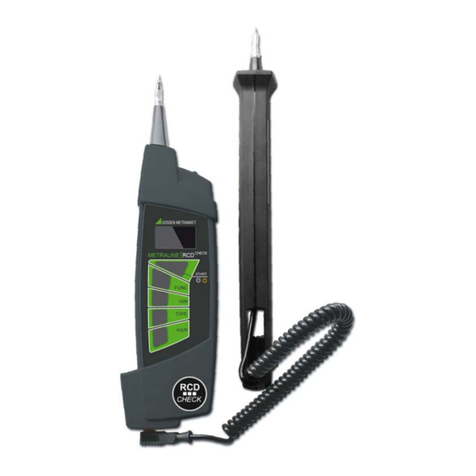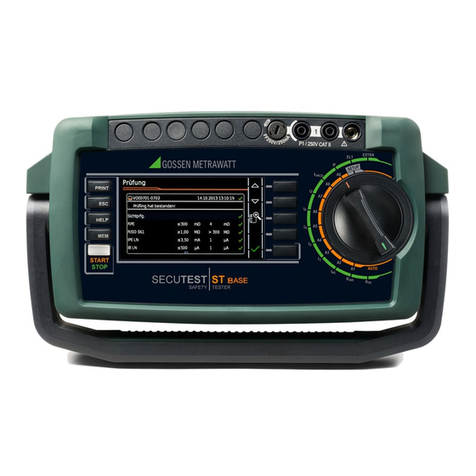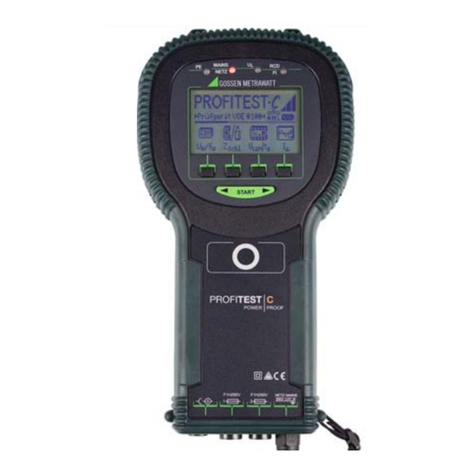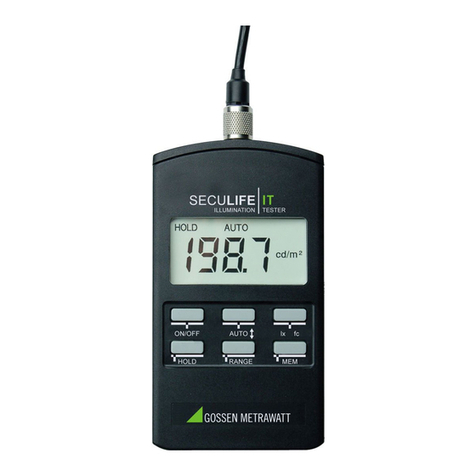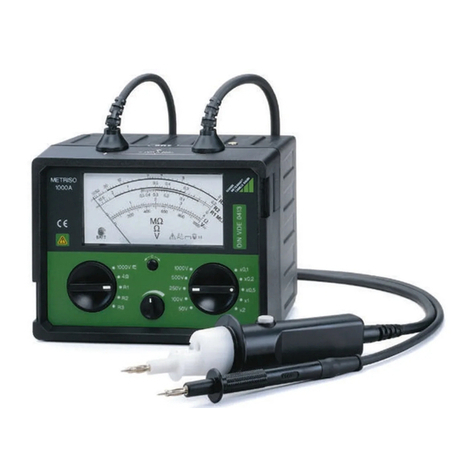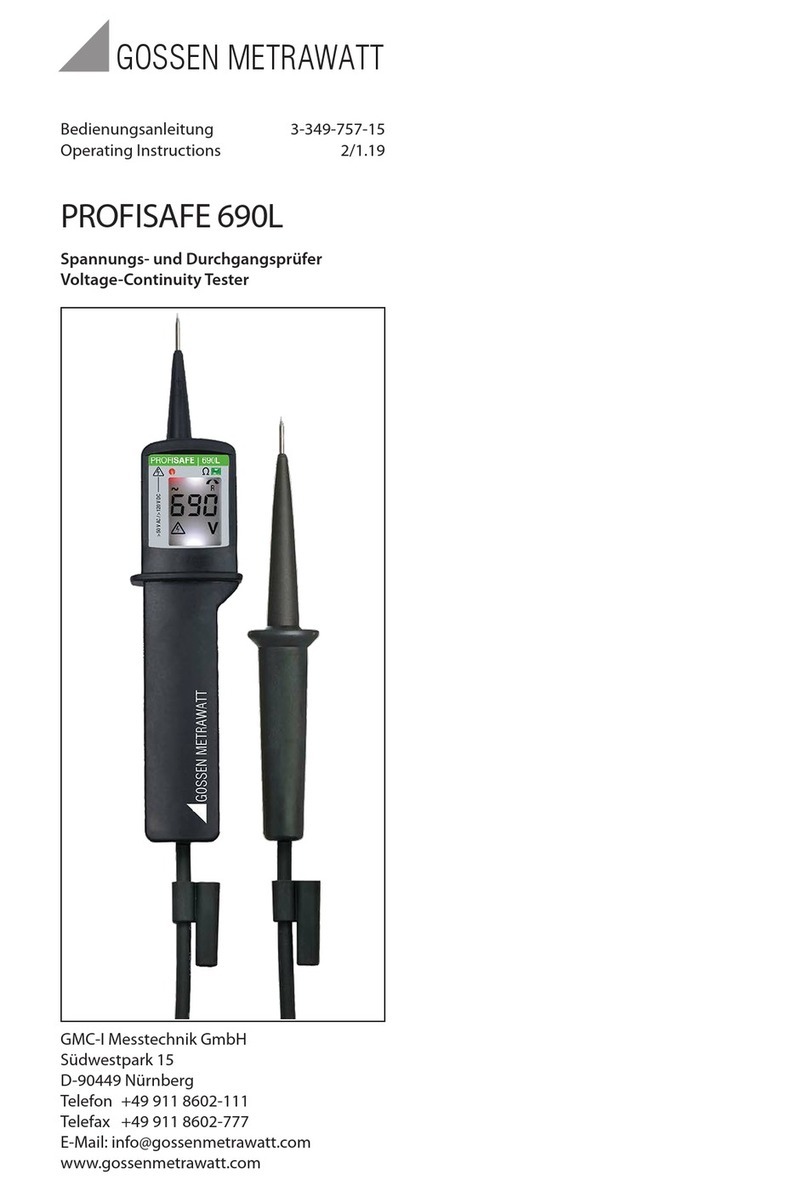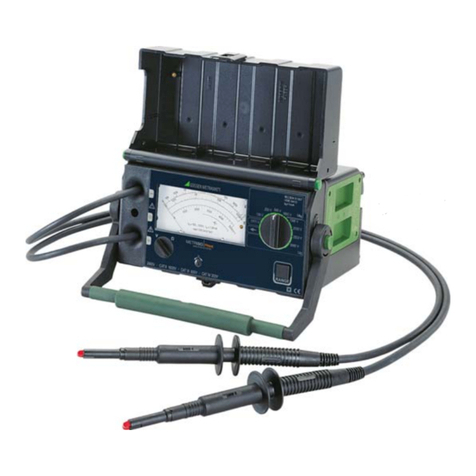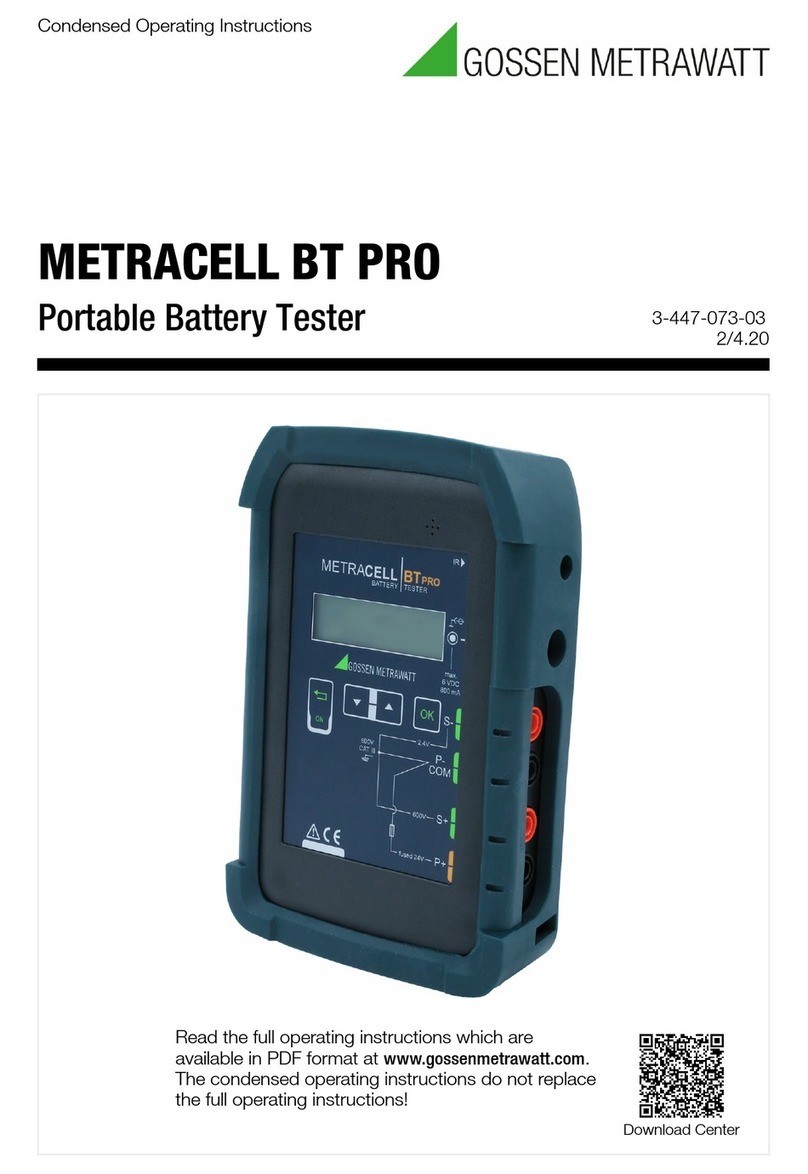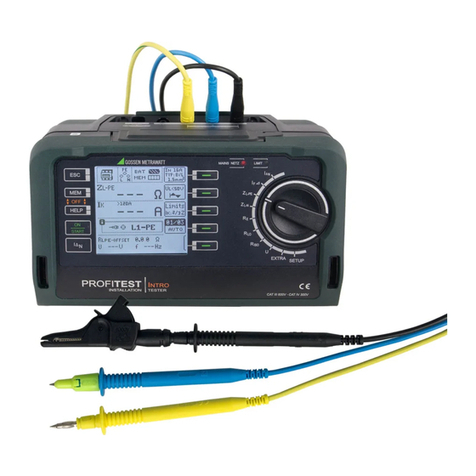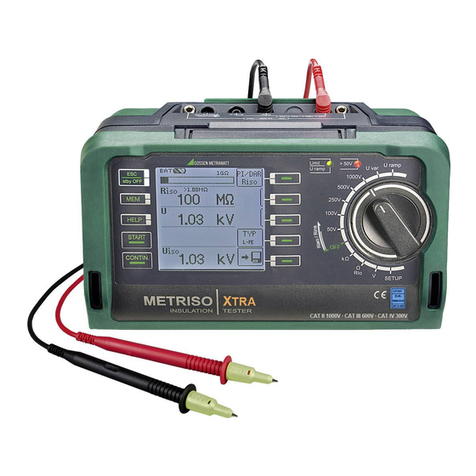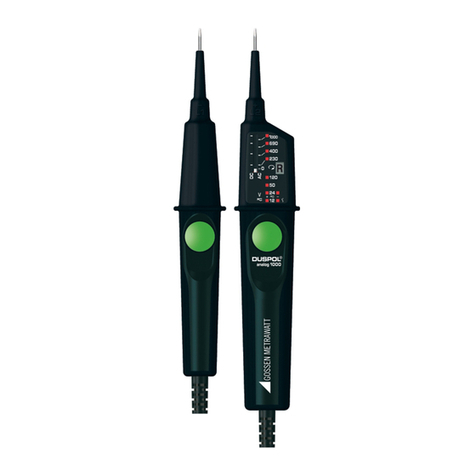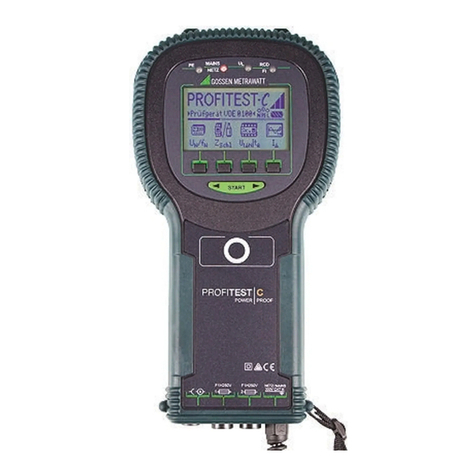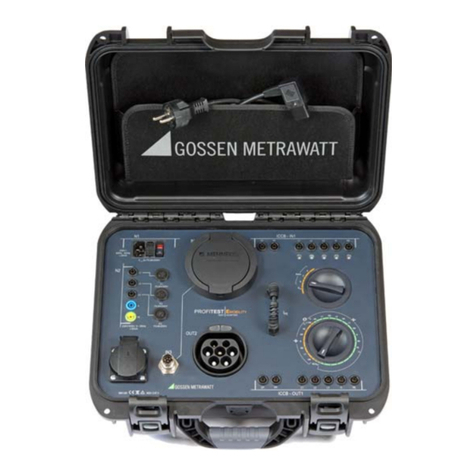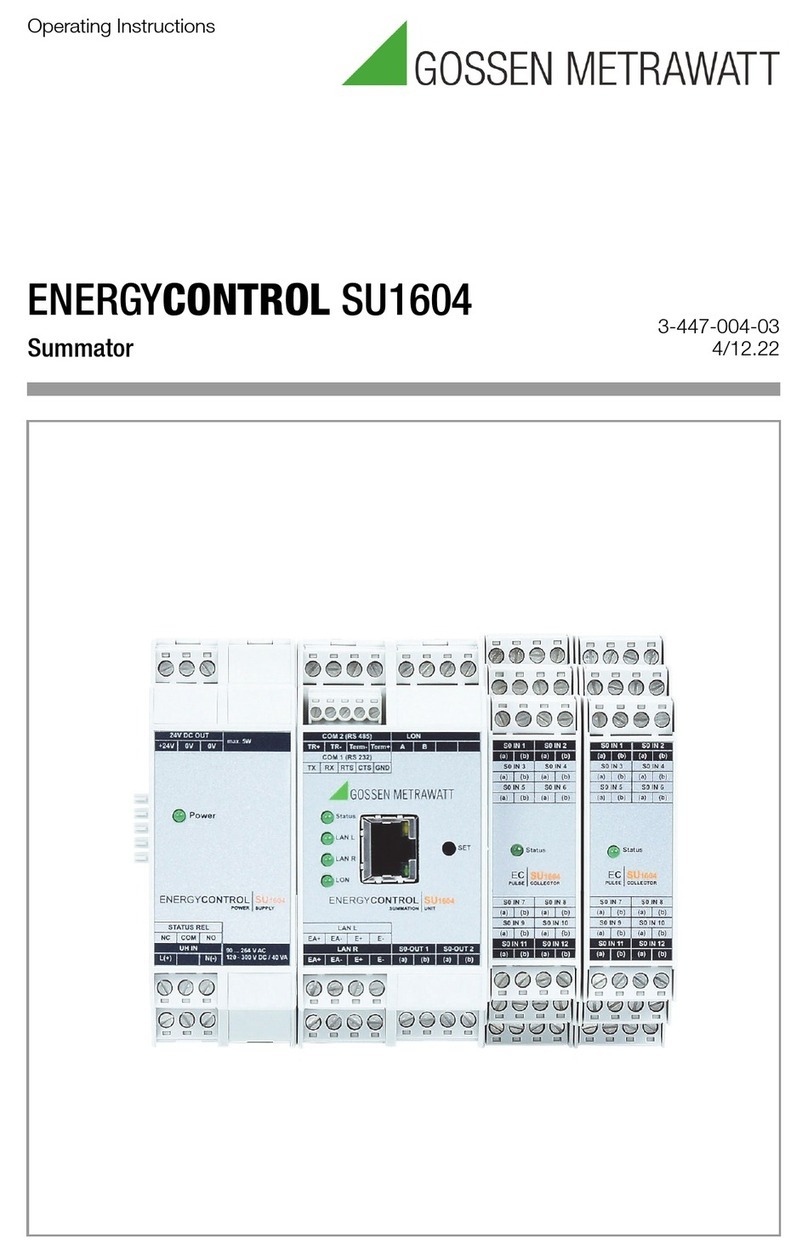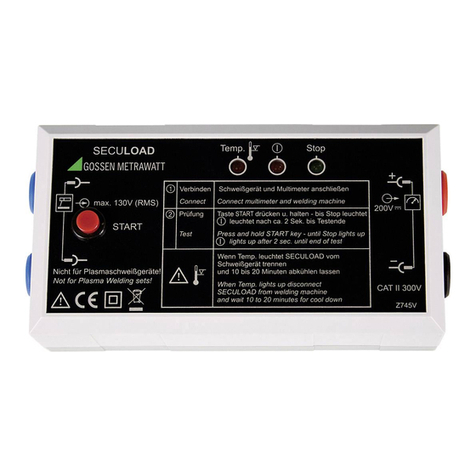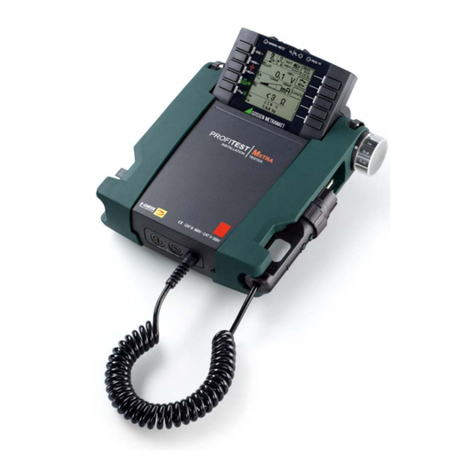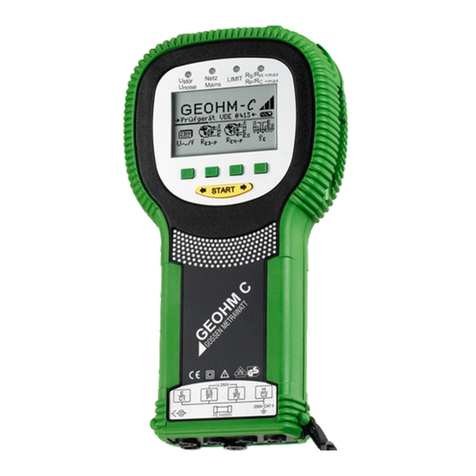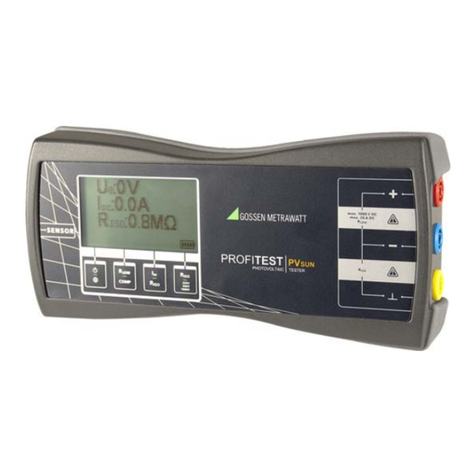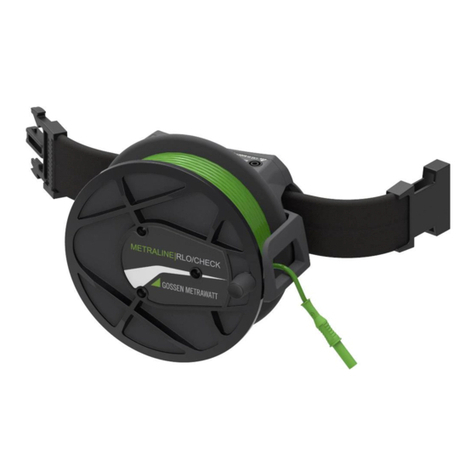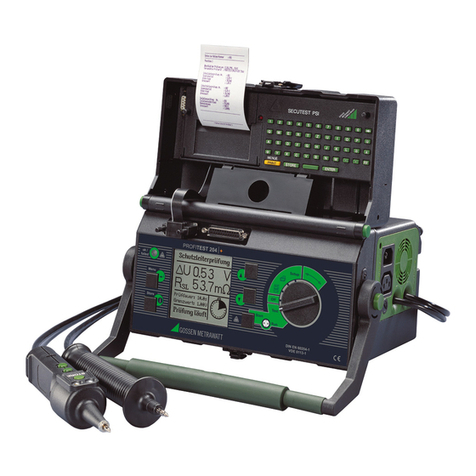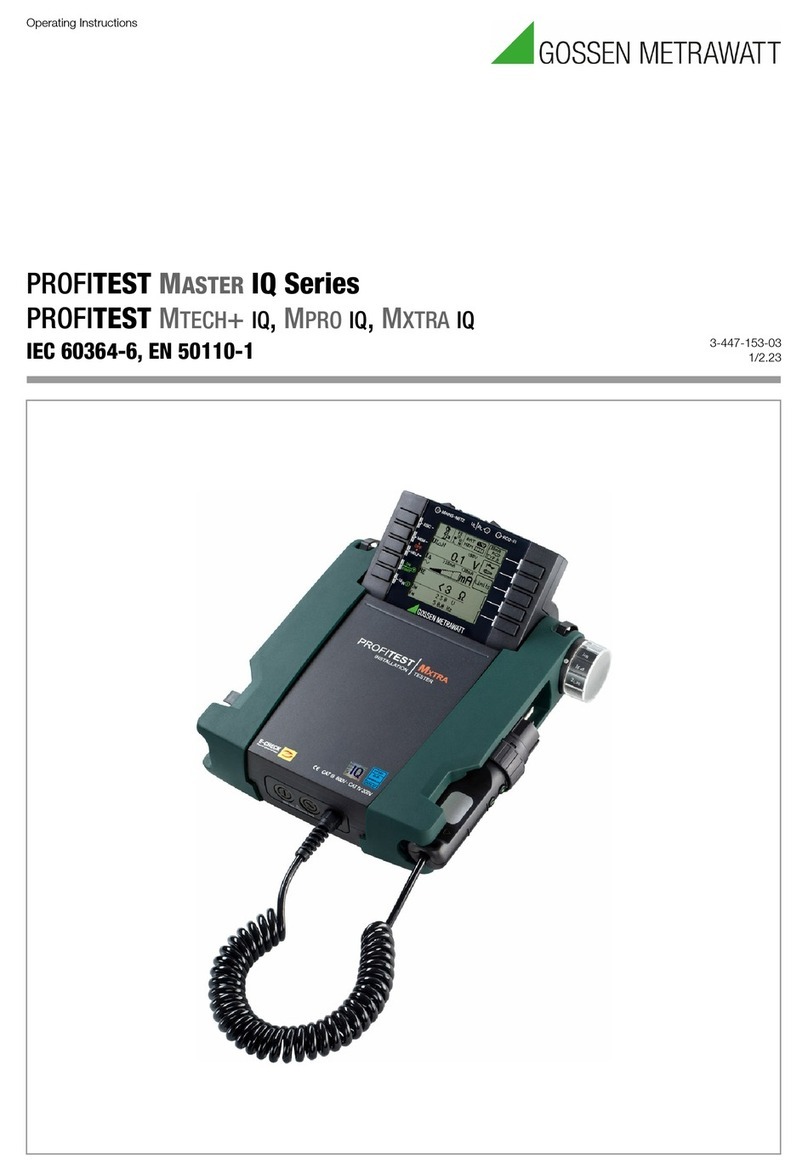
02/2019
DUSPOL
®
digital 1000
9
7KHEX]]HU VRXQGVDQGDOO VHJPHQWVRIWKH/&GLV-
play, all LEDs (running light) as well as the back-
ground and measuring point illumination must be
functioning.
- Test the voltage tester with familiar voltage sources, e.g.
with a 230 V socket.
- Do not use the voltage tester, if the voltage indication, the
phase indication and the vibration motor are not working
properly!
4. Checking the absence of voltage of an installation
¿JXUH%&
For checking the installation, please test the absence of vol-
tage by checking the voltage indication, the phase indication
(the phase indication only works in an earthed AC voltage
mains) and the vibration motor (the vibration motor is activated
by actuating both push-buttons). The installation is only free
of voltage, if all three test circuits (voltage indication, phase
indication and vibration motor) are signaling the absence of
voltage.
- Apply the two probe tips L1/+ 2and L2/- 3to the system
parts to be tested.
- The voltage tester switches on automatically as soon as a
YROWDJH9LVDSSOLHG
- The level of voltage applied is indicated by means of the
LED step indicator Jand the digital display 6.
The 400 V LED of the LED step indicator Jcovers
the voltage range from 400 V AC/DC to 1,000 V AC/
1,200 V DC.
- Alternating voltages are indicated by means of the
VAC symbol Son the LC display 6. Additionally, the
IUHTXHQF\ Tof the AC voltage applied is displayed.
-
Direct voltages are indicated by means of the V
DC
symbol
S
on the LC display 6.Additionally, the polarity indication
Rshows the SRODULW\ (+ or -) applied to the probe tip L2/+
3.
- To differentiate between low-energy and high-energy volt-
ages (e.g. capacitively induced interference voltages), an
internal load in the voltage tester can be connected by ac-
tuating both push-buttons (see section 5).
9ROWDJHWHVW9ORZYROW¿JXUH'
In order to measure voltages lower than 6 V, short-circuit the
probe tips L1/- 2and L2/+ 3and press the push-button 7
of the display handle L2 9three times until the „Lo U“ symbol
is shown on the LC display 6.
- In the low-volt range, voltages from 1.0 V to 11.9 V can be
measured.
- After being activated, the low-volt range is active for ap-
prox. 10 seconds.
%\ DSSO\LQJ D YROWDJH 9 WKH GHYLFH DXWRPDWLFDOO\
switches over to a higher voltage range.
Note:
In the low-volt range, the frequency indication Tis deactivated.
Overload indication
If the voltage applied to the probe tips L1/- 2and L2/+ 3is
higher than the admissible nominal voltage, the „OL“ symbol is
shown on the LC display 6and all LEDs of the step indica-
tor J DUH ÀDVKLQJ 2YHUORDG LV LQGLFDWHG IURP 9$&
1,250 V DC on.
5. Load connection with vibration motor¿JXUH%&
Both handles L1 8and L2 9are equipped with push-buttons
7. Here, voltage is applied to a vibration motor (motor with
unbalanced mass) in the display handle L2 9. From approx.
200 V on, this motor is set in rotary motion. With the voltage
increasing, the motor‘s speed and vibration increases as well.
The duration of the test with a lower internal resistance (load
test) depends on the level of voltage to be measured. In order
to avoid an inadmissible warming of the device, it is provided
with a thermal protection (controlled reduction). With this con-
trolled reduction, the speed of the vibration motor is reduced
and the internal resistance increases.
The load connection (with both push-buttons being actuated)
can be used ...
- to suppress reactive voltages (inductive and capacitive
voltages),
- to charge capacitors,
- to trip 10/30 mA RCD safety switches. The tripping of the
RCD safety switch is done by testing the external conduc-
tor (phase indication) to PE (earth). (figure F)
([WHUQDOFRQGXFWRUWHVWSKDVHLQGLFDWLRQ¿JXUH(
- Fully grasp the handles L1 8and L2 9, in order to en-
sure a capacitive coupling to earth.
- Switch the voltage tester on by briefly actuating the push-
button 7of the display handle L2 9(remains switched
on for approx. 10 seconds!). When the device is switched
on, the display shows „0.0“.
- Apply the probe tip L2/+ 3to the system part to be tested.
During the single-pole external conductor test (phase in-
dication), make absolutely sure not to touch the probe tip
L1/- 2and that it remains contactless.
- If the red LED Kand the symbol Olight up on the
LC display 6, the external conductor (phase) of an AC
voltage is applied to this system part.
Note:
The single-pole external conductor test (phase indication)
can be carried out in an earthed mains from 230 V, 50/60 Hz
(phase to earth) on. Protective clothing and insulating condi-
tions on site might impair the function.
Attention!
The absence of voltage can only be determined by means of
a two-pole test.
7. Phase sequence test¿JXUH*+
- Fully grasp both handles L1 8and L2 9, in order to en-
www.GlobalTestSupply.com
Find Quality Products Online at: sales@GlobalTestSupply.com
